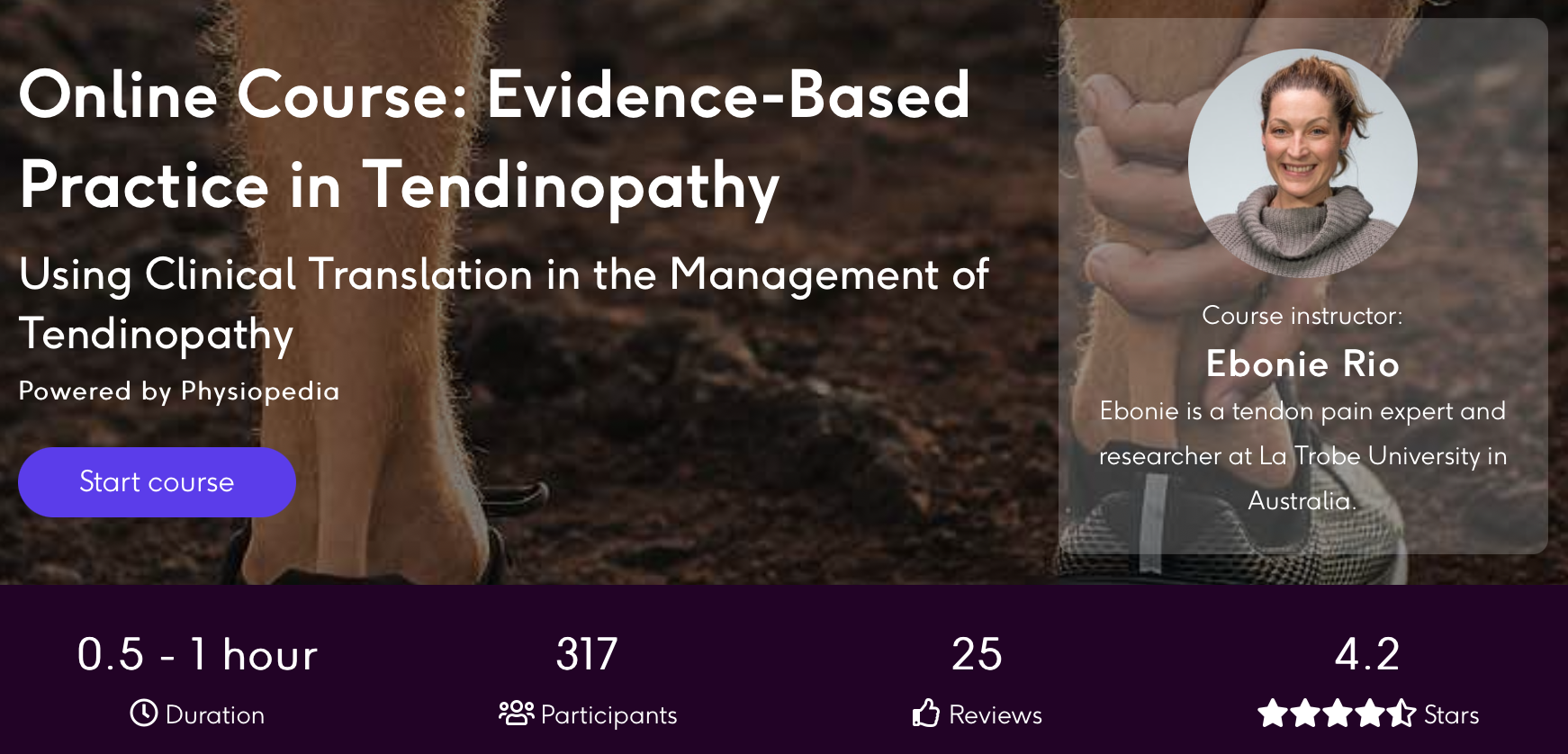Nutritional supplements are expensive and claim to improve a lot of health conditions including tendinopathy.
The multifactorial aetiology of tendon pathology means tendinopathy is a tricky condition to manage. Because of this complexity a variety of treatments are used in clinical practice because it’s often hard to pin down the exact cause or underlying pathology. From a physio perspective manual therapy, shockwave, ultrasound and exercise are all used to improve both pain and function.
Use The Latest EBP to Manage Tendinopathy
Recently dietary supplements have emerged as a potential adjunct to the physio treatments outlined above. A number of small studies have taken place evaluating the effects however they are unlikely to allow for conclusions to be made about whether we should add supplements to our treatments in clinical practice.
This is why a new systematic review published in The Journal of Clinical Medicine has been performed. The aim was to assess if the addition of dietary supplementation combined with physio treatment improves outcomes of any tendinopathy.
Methods
This systematic review adhered to PRISMA guidance and the protocol was pre-registered on PROSPERO. To be included within the review articles had to meet the following inclusion criteria:
- Include participants who were under 70 years old
- Use physiotherapy interventions of any kind which were combined with dietary supplementation which were at least 4 weeks in duration
- Compared physio + dietary supplementation with physio alone or placebo
- Used NRS or VAS to assess pain alongside a functional outcome measure including VISA-A, VISA-P, SPADI and AHS depending on location of tendinopathy
- Be RCTs published in English before November 2021 and have full text available
Four databases were used for the search with the full search strategy available in full as a supplementary file. Two authors independently reviewed the articles which met the inclusion criteria with disagreements resolved by a this reviewer.
Bias of included studies was evaluated using the Cochrane Risk of Bias Tool and statistical analysis including meta-analysis was performed using RevMan. The details of the satistical analysis performed is available in full within the article.
Results
In total six studies, a total of 241 participants, were included within the final review with the mean age ranging from 14.8 to 55.8 years of age. Each study used a different commercially available dietary supplements with intervention duration ranging from 4 weeks to 3 years.
Two of the included trials combined dietary supplementation with extracorporeal shockwave therapy (ESWT) or therapeutic ultrasound (US), four trials compared supplementation with exercise therapy.
Overall the articles were at moderate to high risk of bias due to problems with randomisation, support from the companies who make the supplements and detection bias.
Overall the results of the systematic review show that the addition of dietary supplementation improved the pain and functional outcomes when compared to the control or placebo groups. The pooled analysis of five trials (n= 221) showed a mean reduction in pain score of physio + supplements vs physio alone of -0.74 (0.95% CI, -1.37 – 0.10).
When the results of the four studies which evaluated functional outcome was pooled together there were no differences observed between physio + supplementation vs physio alone.
Clinical Importance and Limitations of Findings
In summary it appears that the addition of supplementation may be useful at improving pain people living with a tendinopathy however the results aren’t particularly clear. Six different supplements were used across six studies each with a very different ingredient list making it hard to say which is best. All of the supplements used had the aim of reducing inflammation however their mechanisms of doing this were different.
So basically this systematic review suggests that using anti-inflammatory supplements may be useful at improving pain but it’s important to look a little deeper here. A RCT by Heinemeir et al demonstrated that NSAIDs had little effect on improving function in tendinopathy likely because the underlying pathology at a cellular level isn’t inflammatory however Rees et al disagree. They think there is an inflammatory aspect regardless of the acuity of tendinopathy.
Combining these two outlooks might explain why anti-inflammatory supplements reduce pain levels but not improve physical function as the supplements aren’t improving the health and strength of the tendon at a cellular level however are reducing the painful effects of inflammation.
Either way the limited number of studies and diverse range of supplements used in this meta-analysis means it’s difficult to draw firm conclusions. In future RCTs should investigate supplements in larger sample sizes. Either way for clinical practice today it doesn’t look like it’ll have a negative effect on patient outcome if you use supplements but it might affect their bank balance.
